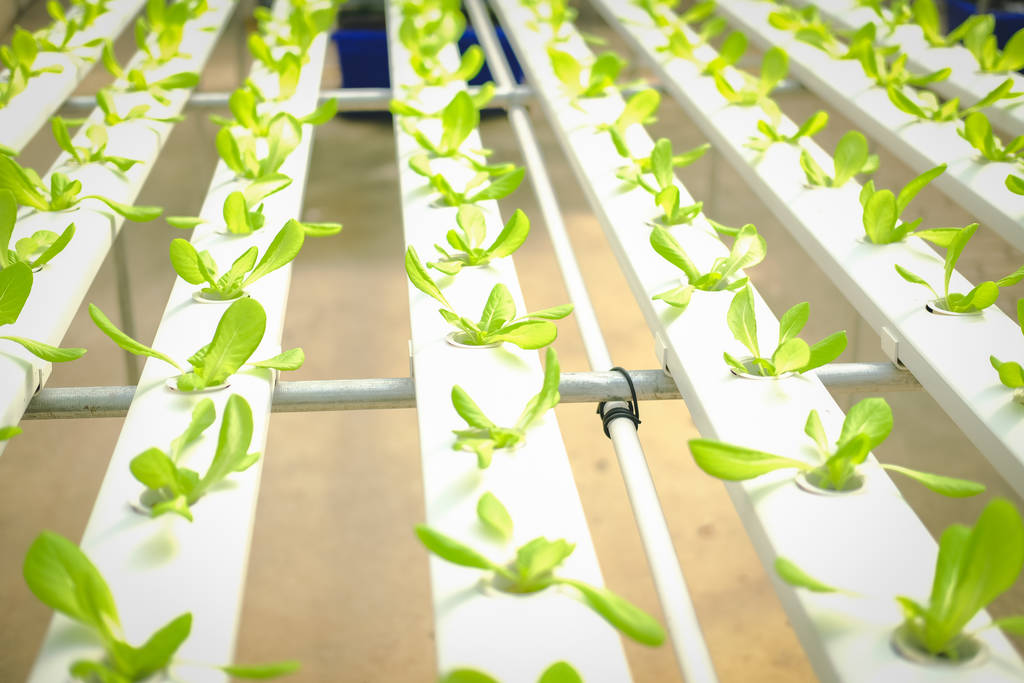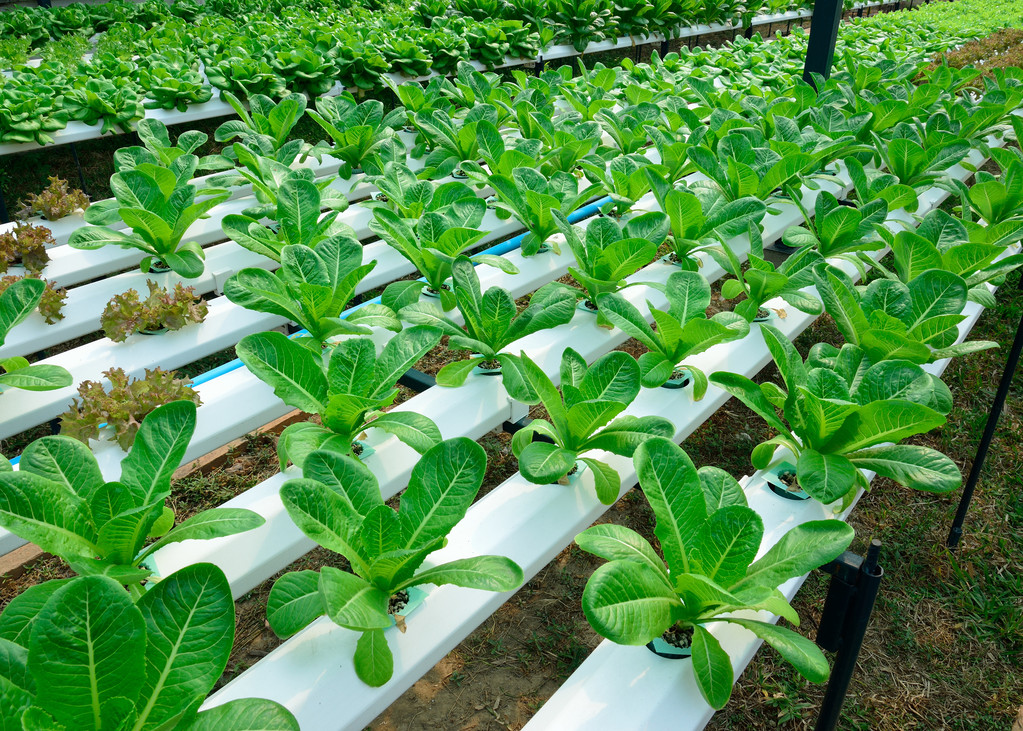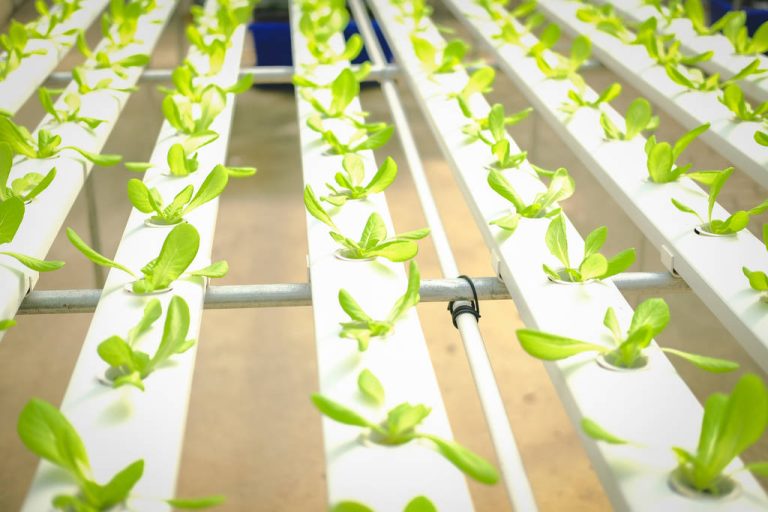Growing plants only in water without soil? This is exactly how the principle of hydroponics works. And you can even use it on your windowsill.

What is hydroponics?
The term hydroponics comes from the inventor of the concept, Dr. Wilhelm Gericke and describes the science of soilless horticulture. The word part “hydro” comes from the Greek and means water. Because with hydroponics, the soil is effectively replaced by water.
As in “normal cultivation”, a plant in hydroponics is supplied with light, the right temperature, water and nutrients. It gets its light from daylight – it only absorbs liquid and nutrients directly from the water, not via the intermediate medium earth.
Hydroponics versus regular vegetable growing – the pros and cons
Proponents of hydroponics find many good arguments for its use:
You can use hydroponics in a small space.
You can optimally promote the growth of the plant by controlling the light, temperature, water and nutrient supply.
With hydroponics you can grow vegetables all year round.
In a hydroponic system, the roots should not rot – unlike in soil.
You don’t have to water the plants every day, you have to refill the nutrient solution much less often.
With a little creativity, you can also upcycle a hydroponic system from plastic waste.
You don’t have to pull weeds.
However, there are also disadvantages:
Some hydroponic systems only work with electricity.
Most hydroponic systems are made out of plastic.
You also need fertilizer for the nutrient solution. If you don’t want to use chemical fertilizer, you can make a nutrient solution out of kitchen scraps or tea bags. You can find instructions on how to do this on the home garden page.
Depending on the design, you will probably need to obtain additional materials such as pumps or plastic containers for the water reservoir.
How to build your own hydroponic system
You can get everything you need from the hardware store:
a plastic box with a lid as a water reservoir
net pots
an aquarium pump with aeration stone
possibly a plant substrate (e.g. pumice stone)
hydroponic fertilizer
And this is how you proceed step by step:
Drill holes in the top of the plastic box to insert the mesh pots.
Place the pump aeration stone in the plastic box.
If you are using seedlings, carefully wash the soil from the roots before planting.
Put the prepared plants in the net pots and then put the net pots in the plastic box.
Fill the plastic box with the water so that the net pots are about an inch deep in the water
Add the fertilizer solution according to the package instructions. If you use homemade fertilizer from tea leftovers, you can use it every third time.
You should aerate your plants for about 15 minutes every 30 minutes. A timer helps with this.
More possibilities: active and passive hydroponic systems
The system that we have presented is an active system. But there are also passive systems. Here the plant fetches liquid and nutrients itself via the roots or via capillary effects. There are three classic, relatively simple, passive systems in hydroponics:
Either you work with substrate, for example pumice stone or coconut fiber. Here you plant your plant in the substrate and fill a water reservoir with nutrient solution underneath. This allows the plant to pull the nutrient solution up with the help of its roots and capillary forces.
The wick system works in a similar way. Here the substrate container and the water reservoir are connected by wicks. These are thin tubes through which the plant draws the nutrient solution.
In a passive system with no substrate, you use a mesh that your plant can stretch its roots through. You place them in a pot over the water reservoir with the nutrient solution so that some of the root ends protrude into the water.
Active hydroponics systems are more complicated to construct. They have elements that need to be powered by electricity, such as pumps or temperature controllers. In theory, all plants that bear fruit above ground can be cultivated in active systems. They include, for example:
Deep Water Culture (described above): Here you let the roots of your plants hang completely in the nutrient solution. An air pump continuously enriches the water with oxygen from below, thus preventing the plants from drowning.
Flood and ebb system: The roots are not permanently submerged in the water. The nutrient solution is pumped at regular intervals to the roots, which hang freely or grow on substrate.
Nutrient Film Technique: It works similar to the ebb and flow system. The plants are arranged in a row and the tube in which they grow is inclined. The nutrient solution is pumped to the higher end with a pump and then flows back into the reservoir at the lower end of the tube.

The differences between hydroponics, hydroponics and aquaponics
The demarcation between hydroponics and aquaponics is relatively simple: Because aquaponics describes a special system in which fish farming and vegetable cultivation are combined. Vegetable cultivation in aquaponics usually takes place in a hydroponic system. So aquaponics is a part of hydroponics.
Hydroponics usually refers to a process in which ornamental plants are grown on expanded clay as a substrate. In hydroponics, on the other hand, the roots usually hang freely and are fully or partially immersed in a nutrient solution.
In this article you learned how to cultivate plants without substrate. If you want to grow plants on expanded clay, you can find information on how to do this in our article on hydroponics.

